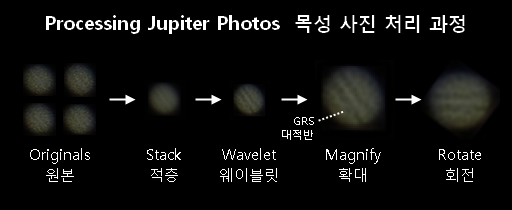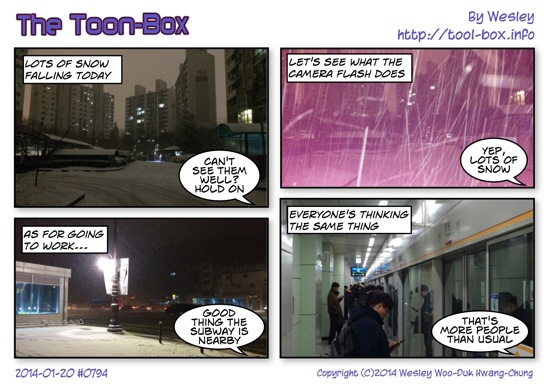Processing small photos of the planets
Posted by Wesley on
Enhancing Jupiter shots from SX50 HS
I've been using my Canon SX50 HS superzoom camera almost exclusively as an astrophotography machine since middle of last year. The 50x zoom is enough to make many of the planets show up as disks rather than spots, so it feels like having a compact telescope with integrated camera. At full zoom, the settings are at 1200mm, f/6.5, and ISO is set to 80 for best quality. Jupiter shots are usually taken at around 1/100 to 1/250s shutter speed (it was 1/160s here), while bright Venus shots can go up to 1/1000s.
Of course, even such massive zoom by camera standards don't make the planetary disk very big. two biggest examples are Jupiter, which goes up to about 32 pixels wide, and Venus, about 41 pixels wide. So getting good details from a single shot is difficult. I have to apply some techniques used by the astrophotography community to enhance the results.
The big helper is undoubtedly RegiStax, which does both stacking and wavelet processing. The stacking averages the multiple photos of the same object, which preserves the details while reducing noise. RegiStax doesn't simply stack the photos, though. They are aligned and only the ones with good quality are picked out for stacking, which improves the quality even further.
In this Jupiter example, I took 131 photos of the planet, out of which 41 of them were picked by RegiStax for stacking. Compared to the grainy photos originally taken by the camera, the stacked image is much more cleaner and smoother. But the cloud features are soft and hard to make out. This is where wavelet processing comes in.
Wavelet processing can be used to amplify the little details in the photos and make them stand out. After making some adjustments on the strength of each wavelet layers, the cloud features became more distinct. There's a ripple in the lower part, and magnifying the processed photo by 200% shows that this is the Great Red Spot (GRS). Rotating the photo (by 54 degrees in this case) makes the planet look "upright".
And this is how I currently process the planetary photos.
Settings: 1200mm - ISO 80 - 1/160s - f/6.5
Time: 2014-01-19 02:57 KST
Location: Suwon, Korea
